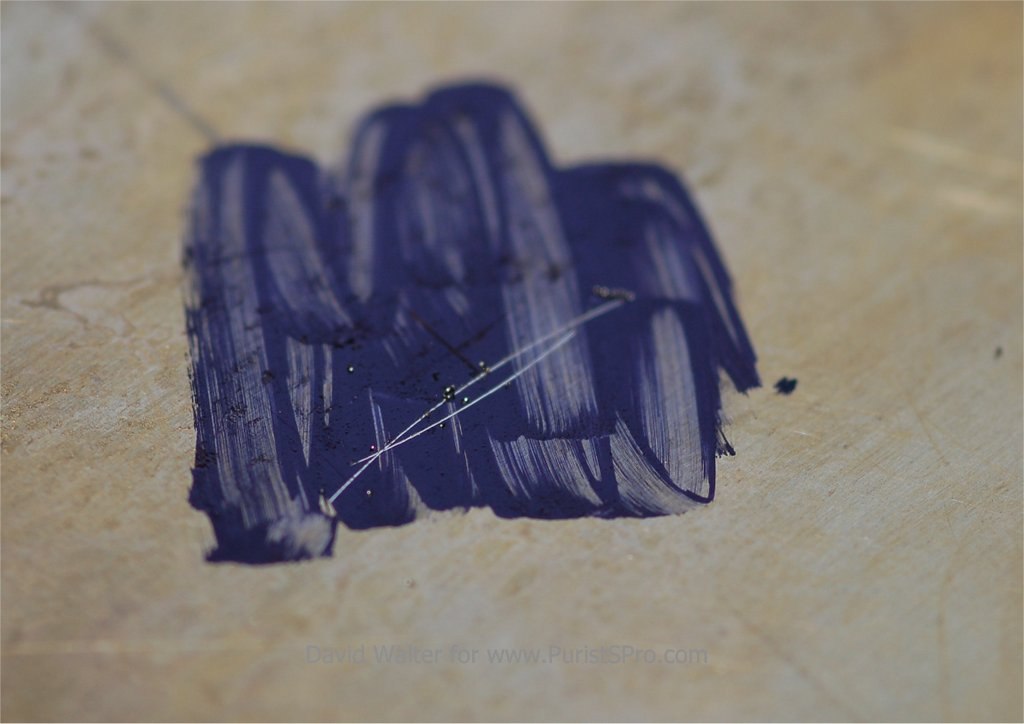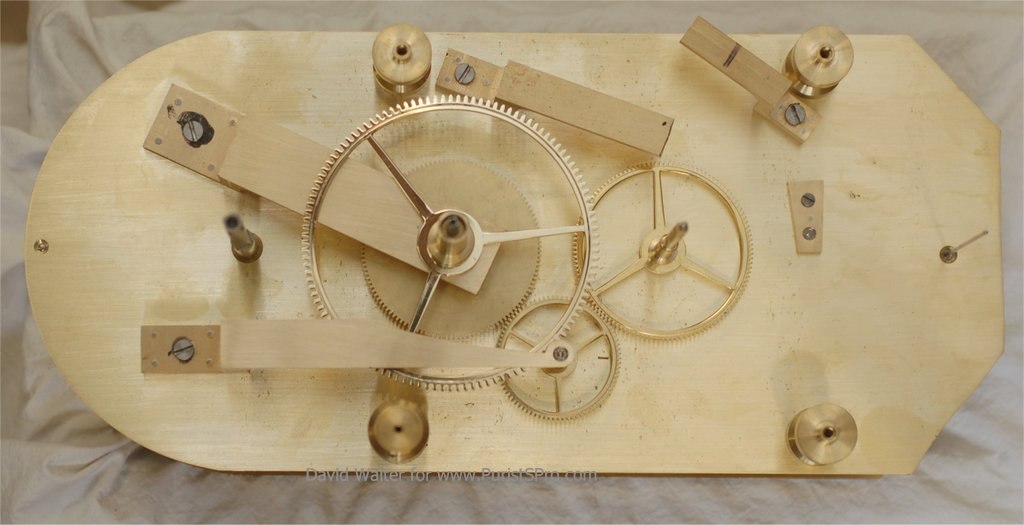
DonCorson
[AHCI]
3358

A David Walter Double Pendulum Clock – Part 8, The Mean/Solar Main Train
A David Walter Double Pendulum Clock
– Part 8, The Mean/Solar Main Train

Every week we are seeing more of David's work on his new double pendulum clock.
This week we have lots to see. The Mean/Solar movement main train and motion work are depthed in, the wheels all crossed out, the pivots finished to size, the jewels fitted to the plates and jeweled endpieces made and fitted. Let's take a look over Davids shoulder by his work.
For those of you who didn't see the earlier installments of this series, you can catch up by looking here:
- Installment 1 – Introduction and Cutting out the plates
- Installment 2 – Making the Barrel
- Installment 3 – The Suspension
- Installment 4 – Invar Pendulum Parts
- Installment 5 – Making the Wheels
- Installment 6 – Completing the Barrels, Cutting some Pinions
- Installment 7 – The Escape Wheels
This is how the week began. We see here the two movements with their wheels. The pinions and collets are fitted on the arbors, the wheels on the collets.

Here we see the month wheel, left, and the center wheel, right, in the depthing tool. With this tool one finds the ideal working distance between the wheel and pinion. This distance is then used to place the holes for the bearings.

The depthing tool is used here to scribe the position on the plate.

Depthing the 3rd wheel and escape pinion.

Scribing the distance in the front plate. The center wheel - 3rd wheel distance has previously been scribed. The intersecting point of the two lines is pivot position.

The X clearly marked here shows the spot to place the bearing jewel.
Much care is needed to assure the accurate postioning. The movment plates are clamped to the x-y table, a pointer chucked up and by lightly touching the plate leaving a small mark the positioning checked. It must be exactly at the crossing of the scribed X.

After the position is found the hole for the jewel is drilled and then reamed to exact size. Here we see the reaming tool. For press-in-jewels the diameter of the hold is very important. It is just the frictional fit between the hole and the jewel that holds the jewel in place. If the hole is too big the jewel risks to move in use and will not assure the longitudinal positioning of the arbor. If the hole is too small the risk is tht the sapphire jewel will be broken by the force needed to press the jewel into the hole. It is finally the elasticity of the brass plate that allows pressing the jewel in and holds it in place.

The jewel is pressed in place using a pusher with a flat, hardened face.

David uses clear sapphire jewels in his movements. Ruby is sapphire with a trace of chromium to make it red. There is no differrence in the properties between sapphire and ruby. The pierced jewels have oil cups, the solid jewels will be endpieces.

The Mean/Solar train finished and in place. The wheels have been crossed out the jewels and endstones fitted and the endshakes set. The endshake is the longitudinal freedom of an arbor. This freedom is necessary so that the arbor doesn't bind. But the freedom needs to be limited so that the functionality of the clockwork is assured.

The Mean/Solar motion work in place. The arbors from the motion work below this are captured in their jewels in this plate which is mounted on the pillars.

A side view of this movement showing 3 levels of this movement, from the bottom, the barrel cock and barrel, the main train and the motion work.

As we can see in the picture above some of the cocks are not yet used. I think they will be used for the equation of time mechanics. What do you think?

A David Walter Double Pendulum Clock – Part 8, The Mean/Solar Main Train
